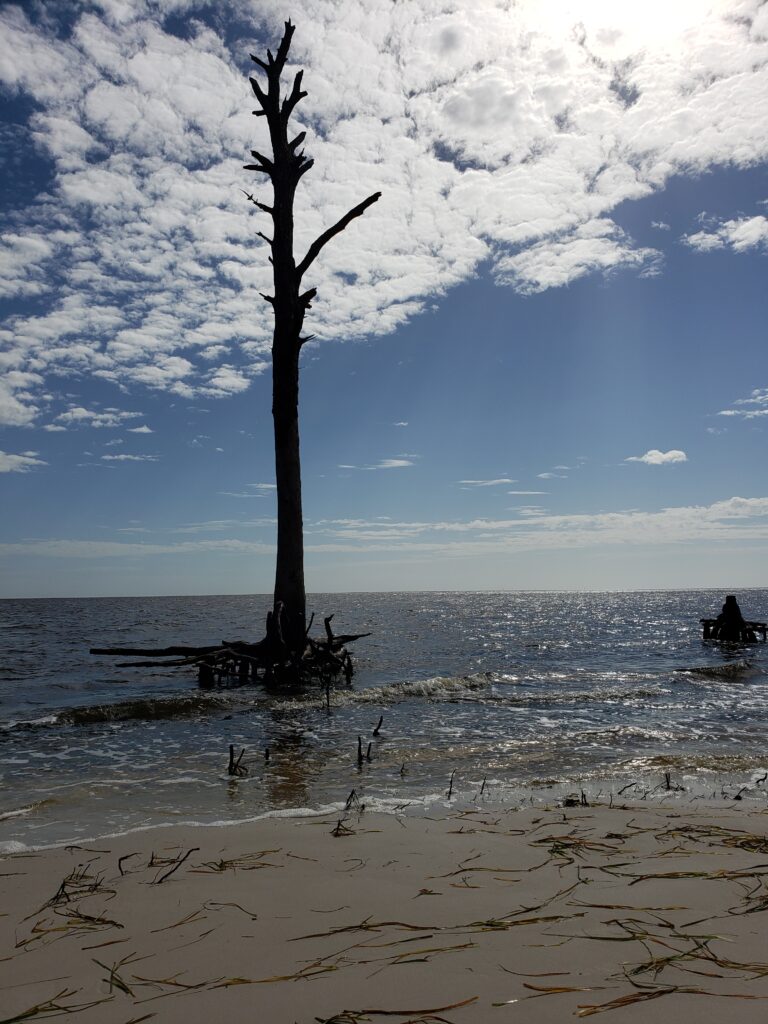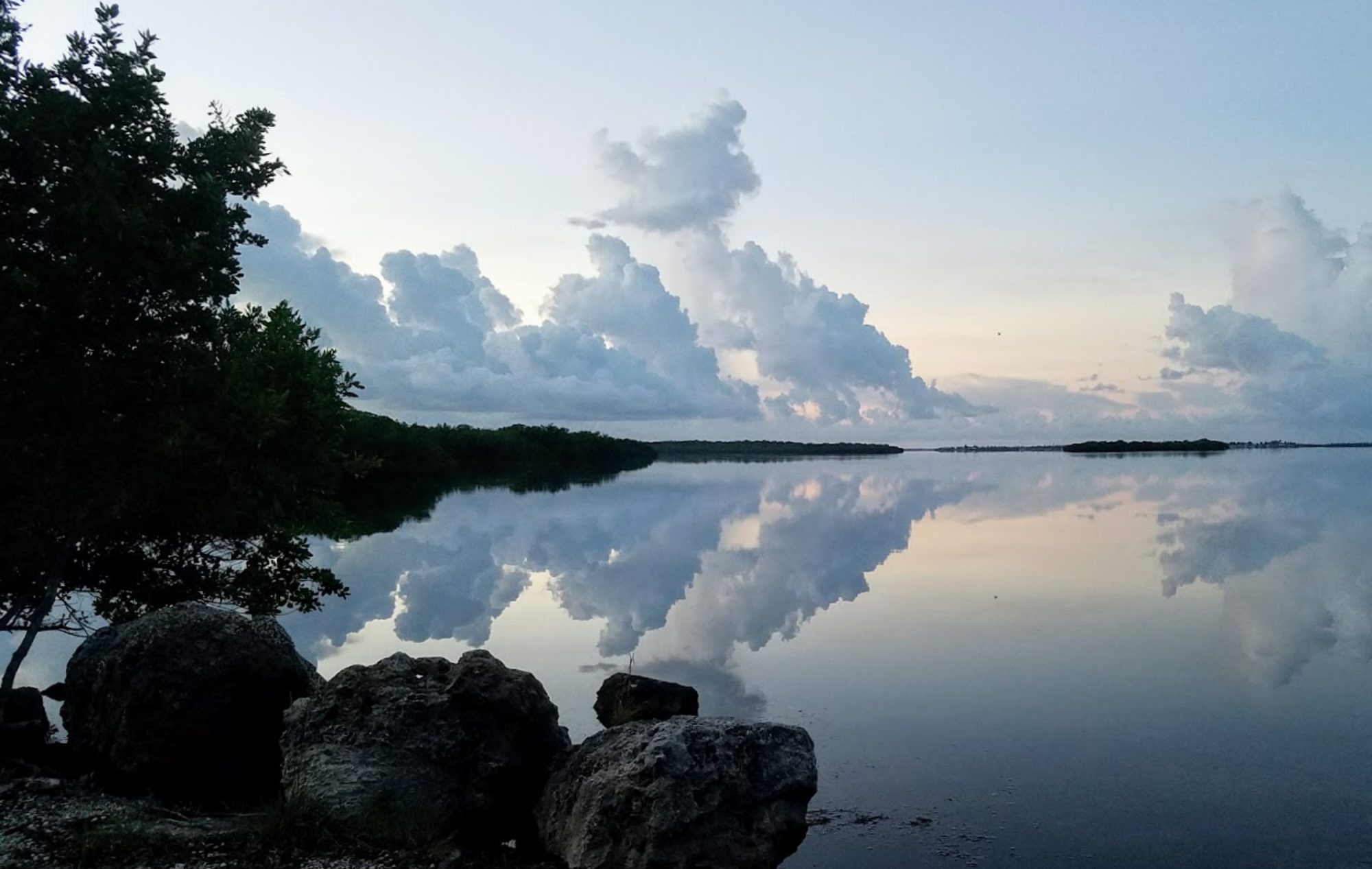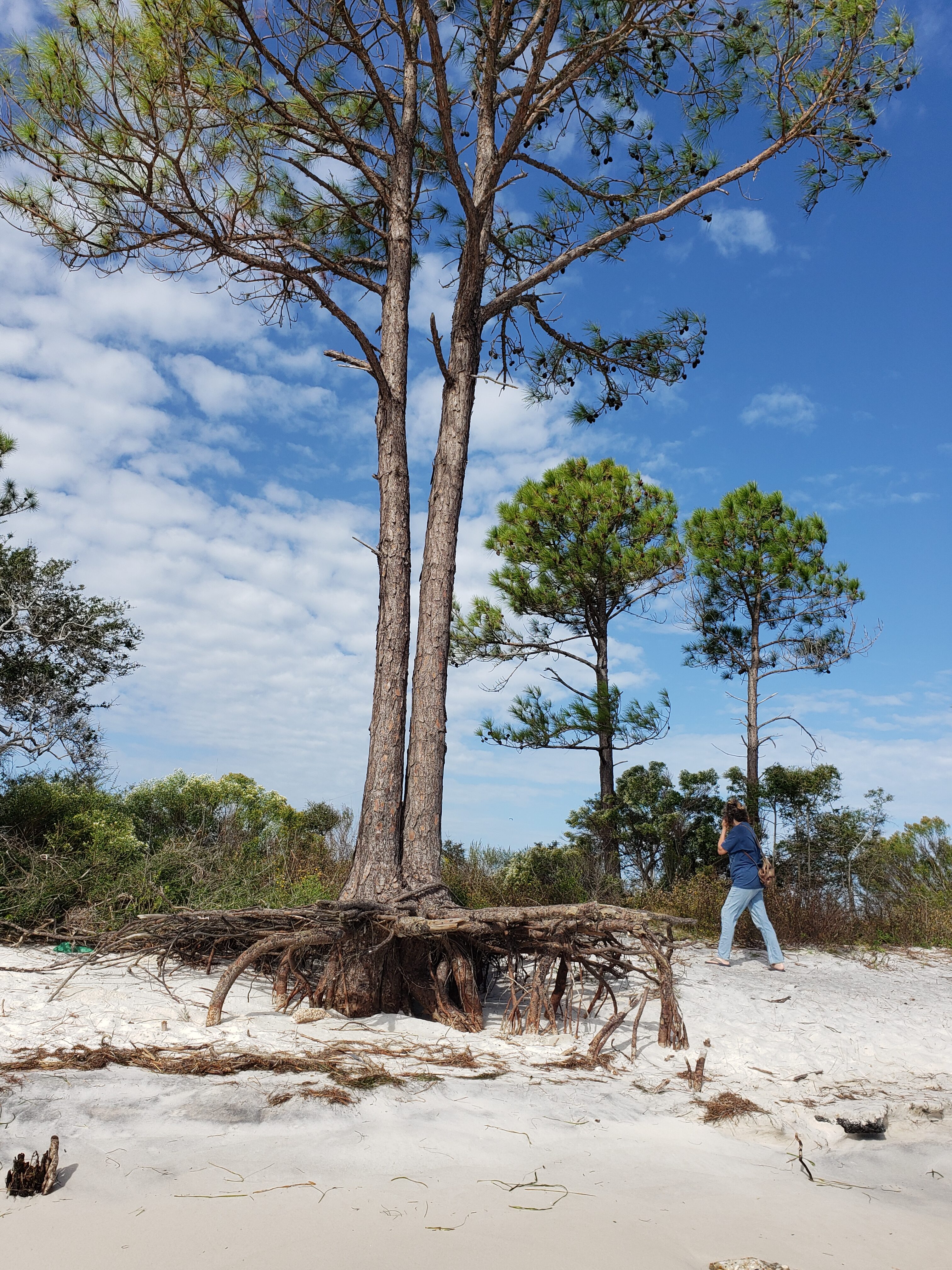Hermit crabs! Crucifix shell! Horseshoe crab shells! Though it be small, Mashes Sands Beach is a spot that should not be missed. This sugar sand beach offers a small parking lot and such a nice portable toilet setup that I would put it in my house. A picturesque salt marsh, which was emptying into the Gulf through a small inlet in the western edge of the beach on my first visit, lines each side of the road to this beach.

The Sea is Coming for Florida
The landscape on this spit of land shows how the hurricanes that have pounded the Gulf Coast over the past several years have really hammered the coastline. Just look at this pine tree — those are ROOTS, folks. Very recently, all of that root structure was underground and on dry land. The sea is coming for Florida, and I intend to see as much of our coastline as I can before it all disappears.

Crucifix Fish
On Mashes Sands Beach, I found my first crucifix fish. Ever since I was a little girl, I’ve read about these odd shells, which are not shells at all but the bottom part of the head of a saltwater catfish. They are frequently enough found that there are postcards about them, and those have always caught my eye. The bone does, indeed, look something like a crucifix! According to the legend, God chose this fish to remind us the sacrifice Christ made for us. The bone shows his body on the cross and the hilt of the sword that killed him (I cannot find the body or the sword, but the cross is clearly visible). The reverse of the bone looks like a Roman shield, and sometimes the bones rattle when you shake them, bringing to mind the dice thrown for Christ’s robe. Mine does not rattle, and it were not for the years I spent longing for one, I probably would have left it on the beach. But it is an interesting example of how we can find God in nature.

Horseshoe Crabs
Even better were the tiny horseshoe crab shells, or molts, that littered the eastern side of the beach. Here is a terrific link to more information about why horseshoe crabs must replace their shells to grow. I hope that I can some day visit this beach on a full moon evening when the horseshoe crabs are spawning.
These crabs (actually they are more closely related to spiders than crabs!) are fascinating — they have 10 eyes on their heads, and light receptors along their tails. The size of their optic nerve makes them ideal for vision research. They look prehistoric because they are! The fossil record shows that these critters have been roaming the earth far longer than we have. Components of their blood is used to ensure that vaccines and surgical equipment are sterile. Although they look like they could really hurt you with their pointy tails, they are harmless. They use their tails to right themselves if they are flipped by a wave.
Hermit Crabs
Every single seashell I picked up on this beach was inhabited by a hermit crab (except for one live tulip shell). Here’s a short video showing a group of them at the water’s edge.
There was no sign for Mashes Sands. Sharol found it in a tourism guide for The Forgotten Coast. This is why it is such a good idea to check with the local tourism office or Chamber of Commerce when you visit a new area. If you visit this link and click the name of a Florida County, we’ll link you to their tourism office. How many other special spots have we overlooked because we just didn’t know?


Super powerful illustration of sea level rise.
Wait till you see Boneyard Beach!